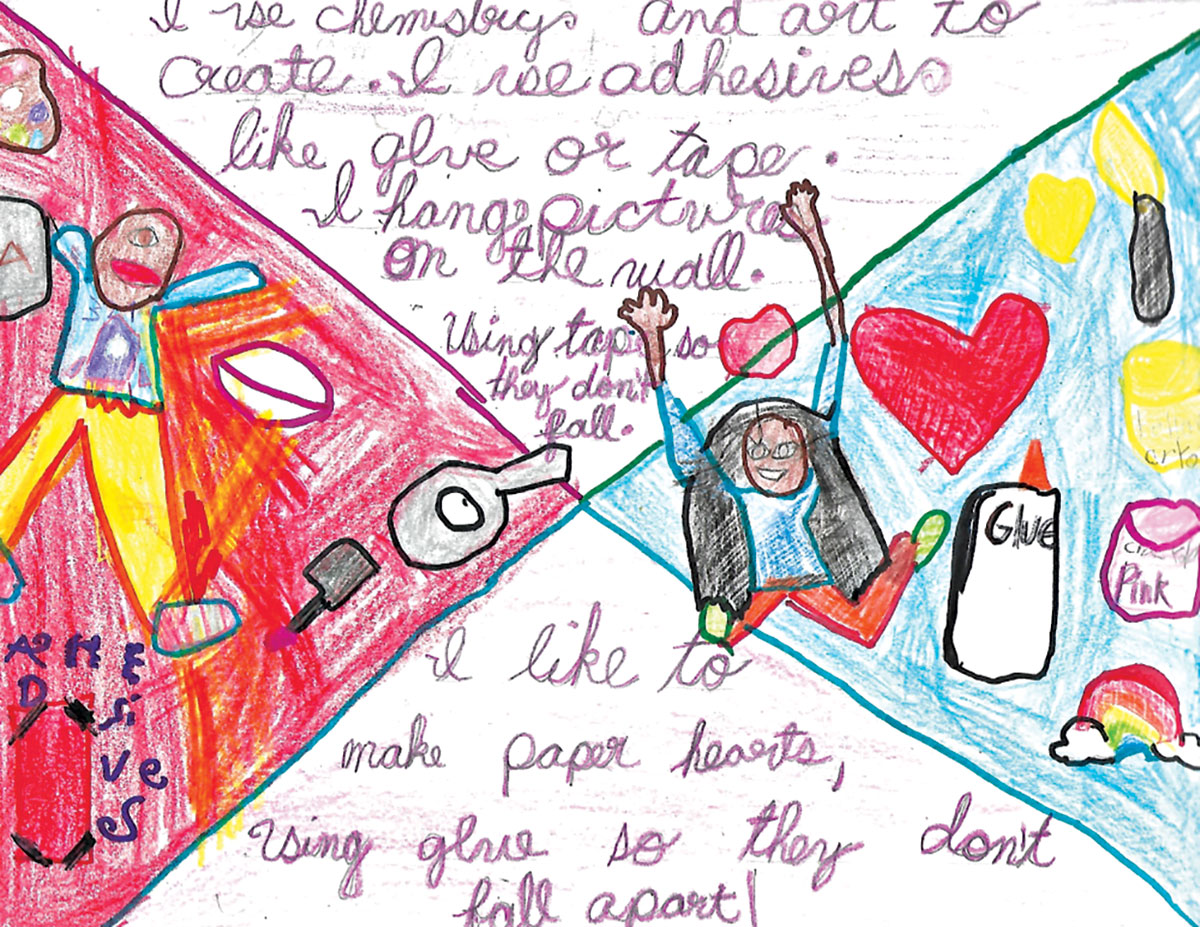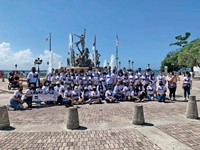Advertisement
Grab your lab coat. Let's get started
Welcome!
Welcome!
Create an account below to get 6 C&EN articles per month, receive newsletters and more - all free.
It seems this is your first time logging in online. Please enter the following information to continue.
As an ACS member you automatically get access to this site. All we need is few more details to create your reading experience.
Not you? Sign in with a different account.
Not you? Sign in with a different account.
ERROR 1
ERROR 1
ERROR 2
ERROR 2
ERROR 2
ERROR 2
ERROR 2
Password and Confirm password must match.
If you have an ACS member number, please enter it here so we can link this account to your membership. (optional)
ERROR 2
ACS values your privacy. By submitting your information, you are gaining access to C&EN and subscribing to our weekly newsletter. We use the information you provide to make your reading experience better, and we will never sell your data to third party members.
Programs
National Chemistry Week 2020 goes virtual
Volunteers embodied this year’s theme of “Sticking with Chemistry”
by Linda Wang
December 17, 2020
| A version of this story appeared in
Volume 98, Issue 48

The coronavirus pandemic severely limited in-person outreach activities this year, but that didn’t stop volunteers from more than 140 American Chemical Society local sections and nine international chapters from communicating the value of chemistry in everyday life.
National Chemistry Week (NCW), which is ACS’s largest annual outreach event, took place both virtually and in socially distanced settings Oct. 18–24. The theme, “Sticking with Chemistry,” which featured the chemistry of glues and adhesives, seemed particularly fitting in a year filled with challenges and lost opportunities.
“I know it can be more difficult to capture an audience without the fancy venues and museum foot traffic, but the coordinators and other volunteers managed to find ways to still have successful and fun events,” says Holly Davis, chair of the Committee on Community Activities, which organizes NCW with the help of the ACS Office of Science Outreach. “I am deeply grateful for their dedication to making a positive change in the public’s impression of chemistry while having fun and keeping everyone safe.”
NCW got its start in 1987 when ACS immediate past president George Pimentel launched National Chemistry Day. The event was so successful that ACS renamed it National Chemistry Week in 1993.
During this year’s celebration, more than 21,000 people visited the NCW website, and the #NCW and #NationalChemistryWeek hashtags were viewed by more than 35 million people around the world, based on online impressions and interactions. Many local sections distributed online educational resources, such as the NCW publication Celebrating Chemistry, to schools and community organizations. And the 2020 NCW Illustrated Poem Contest gave students in grades K–12 an opportunity to showcase their creativity (see box for the winners).
“Chemists rose up to the many challenges through which we are living to celebrate NCW, both virtually as well as in some carefully planned and pandemic-sensitive in-person activities,” ACS president Luis Echegoyen says. “ACS thanks everyone who actively organized and participated in these celebratory activities. Their tireless dedication and volunteer work is admirable and very much appreciated.”
Here, in alphabetical order by group name, are highlights from this year’s celebration collected through reports from ACS local sections and international chapters.

The Carolina-Piedmont Section worked with the Museum of York County to film five activities and demonstrations and posted them online.
The Colombia International Chemical Sciences Chapter held a virtual chemistry festival.
The Dallas–Fort Worth Section’s virtual event featured 21 original videos provided by students from local schools, as well as three Facebook Live events.
In the East Tennessee Local Section, University of Tennessee, Knoxville, emeritus professor Al Hazari presented his 30th annual chemistry magic show virtually. Volunteers also distributed NCW materials to East Tennessee area schools, public libraries, and science museums.
Volunteers from the Georgia Section met at Perimeter College at Georgia State University and filmed four chemistry demonstrations, which were posted to YouTube and advertised to local K–12 teachers.
The Idaho Section hosted virtual school visits and a virtual chemistry magic show.
In the India International Chemical Sciences Chapter, the Bombay College of Pharmacy Student Chapter held three contests in which students were challenged to write an autobiography of a glue, draw or digitally create a humorous comic on chemistry laboratory scenes, and create memes about general chemistry. The chapter also held Periodic Table ChemBingo, a chemistry quiz, a webinar on adhesives, and a glue-making demonstration for seventh-grade students.
The Joliet Section hosted a presentation on the chemistry of adhesives at Daubert Chemical.
The Kalamazoo Section partnered with the Kalamazoo Valley Museum on a digital workshop in which participants used science clues to solve a crime.
In the Kanawha Valley Section, the West Virginia State University student chapter hosted a virtual event in which students demonstrated how to make glue at home.
The Lexington Section assembled grab-and-go kits for children to pick up at the local library. Kits contained all the materials needed to do five activities, including making glue.
The Louisville Local Section and the Kentucky Science Center hosted a STEMinar event for high school students.
The Malaysia International Chemical Sciences Chapter, in collaboration with the University of Technology, Malaysia, and the Johor State Education Department, organized ChemFest 2020 to promote solutions to climate issues.
The Maryland Section hosted six virtual programs through local libraries. Students explored concepts such as adhesion, cohesion, contact angles, polymer entanglement, and triboluminescence.

The Middle Georgia Section and the Georgia College and State University Chemistry Club hosted Virtual Family Fun Night on Facebook and Instagram Live. Wearing face masks, volunteers performed eight demonstrations.

In the Nashville Local Section, the Tennessee Tech University student chapter gave out 100 NCW activity bags at the Tennessee Tech STEM Center. Students also gave out cotton face masks and fabric markers so people could design their own masks.
The New York Local Section hosted virtual chemistry demonstrations and a chemistry knowledge contest through Kahoot.it. More than 80 volunteers from at least 18 area organizations helped make the event a success.
The Nigeria International Chemical Sciences Chapter held a 2 h virtual event featuring a talk on the chemistry of adhesives and glues and virtual demos by student chapter members.
The North Carolina Section prepared two demos and shared them on its YouTube channel.
In the Northern New York Section, students carried out experiments like testing how many times the sticky part of a sticky note can be reused. Participating schools included Banford Elementary School in Canton, Lawrence Avenue Elementary School in Potsdam, Edwards-Knox Central School in Hermon, and Norwood-Norfolk Central School in Norwood.
The Pittsburgh Section partnered with the Carnegie Science Center to host Virtual ChemFest, which broadcast chemistry demonstrations and career talks directly into classrooms. The local section raised $13,000 to cover the costs of all participating schools and educators. The event reached more than 4,800 students.
The Puerto Rico Section produced seven virtual NCW programs, which reached 14,400 people. Working with the science advocacy organization Ciencia Puerto Rico, the University of Puerto Rico Río Piedras Campus student chapter provided demonstration kits for 120 middle school girls and led a 2 h virtual workshop for them.
The Saudi Arabia International Chemical Sciences Chapter held a week of virtual workshops in both English and Arabic. Attendees were from Saudi Arabia, the US, India, and the UK.
In the South Florida Section, the student chapters at Florida International University Biscayne Bay Campus and Barry University produced chem demo videos, which were posted to YouTube. In addition, the Barry University student chapter prepared 500 activity bags for children attending the Phillip and Patricia Frost Museum of Science.
The Southwest Georgia Section hosted Virtual Science Saturday, which featured activities for students in grades K–12 to do at home. The video was posted to Facebook.
In the Southwest Louisiana Section, the University of Louisiana at Lafayette student chapter posted videos of their favorite science demos to Facebook.
In the Susquehanna Valley Section, the Bucknell University student chapter hosted a virtual Halloween Chemistry Show in partnership with the Lewisburg Children’s Museum.

The Virginia Section assembled more than 1,500 activity kits for teachers in elementary, middle, and high schools in 16 counties.
The Wilson Dam Local Section partnered with Florence-Lauderdale Public Library and an ACS student chapter for a socially distanced demonstration event for kids ages 6–12. Volunteers packed 36 slime design kits, which were available for pickup at the library during NCW.
Next year’s NCW celebration will take place Oct. 17–23. It will focus on reaction rates with the theme “Fast or Slow . . . Chemistry Makes It Go!”
NCW Illustrated Poem Contest winners
The ACS Committee on Community Activities and the ACS Office of Science Outreach have announced the winners of the 2020 National Chemistry Week Illustrated Poem Contest, in which K–12 students were invited to share their interpretation of this year’s theme, “Sticking with Chemistry,” in the form of illustrated poems. First-place winners in each grade category received $300. Second-place winners received $150. View all poems at www.acs.org/ncw.
K to 2nd grade

▶ First place: Aidany Diaz, South Florida Section

▶ Second place: Evelyn Colbert, Chemical Society of Washington
3rd to 5th grade

▶ First place: Rishi Khedekar, Princeton Section

▶ Second place: Luke Evans, South Florida Section
6th to 8th grade

▶ First place: Simran Utturkar, Eastern New York Section

▶ Second place: Ashmita Prajapati, Northeastern Section
9th to 12th grade

▶ First place: Alyssa Tang, Orange County Local Section

▶ Second place: Kayla Peirce, Susquehanna Valley Section





Join the conversation
Contact the reporter
Submit a Letter to the Editor for publication
Engage with us on Twitter